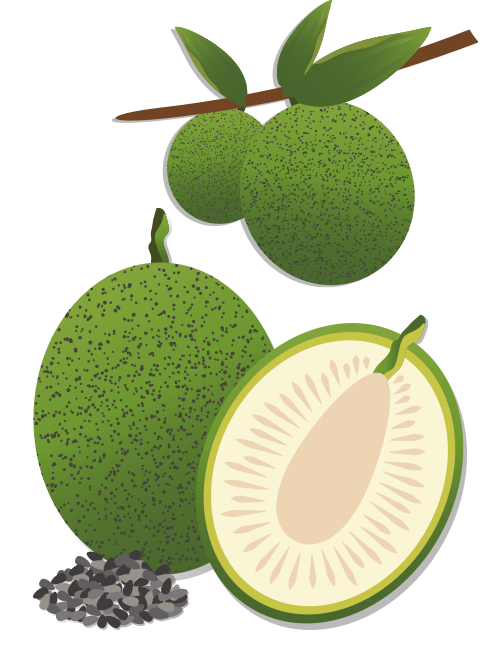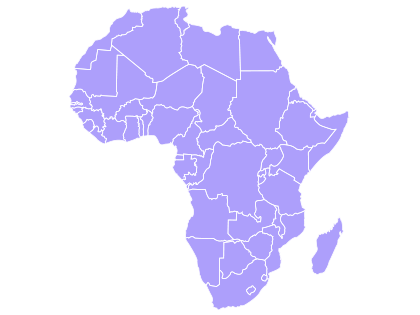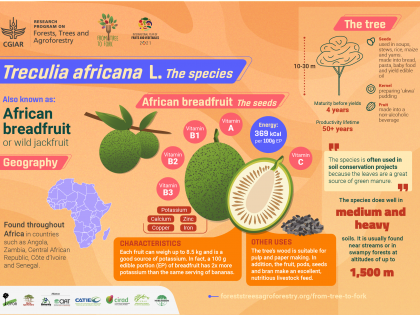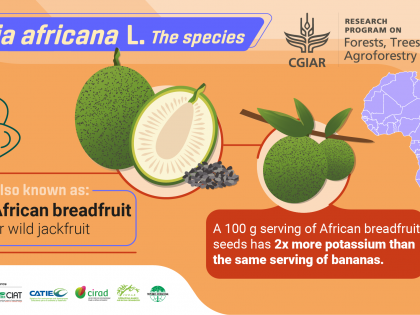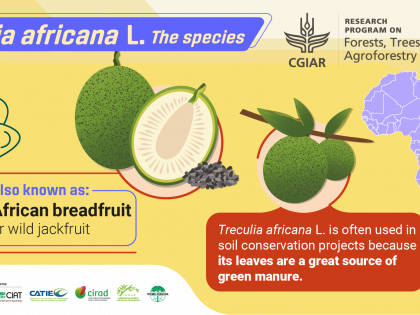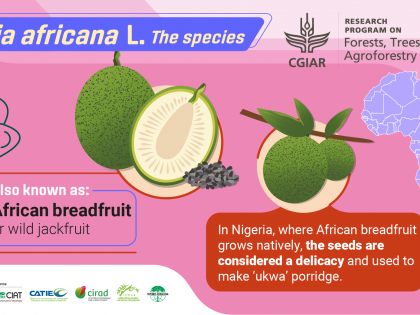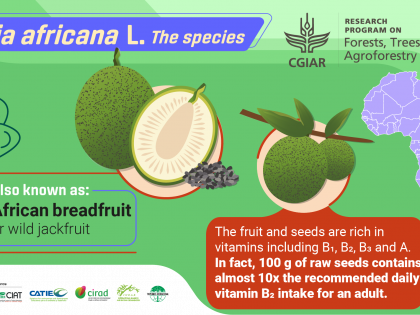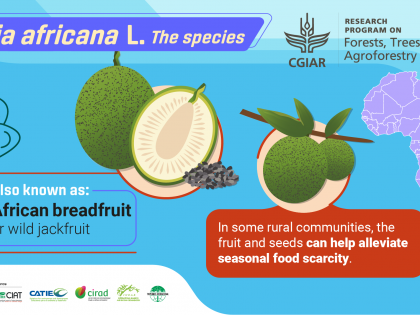Geography
Found throughout Africa in countries such as Nigeria, Angola, Zambia, Central African Republic, Côte d’Ivoire and Senegal.
Uses
African breadfruit is an enormous fruit that can weigh up to 8.5 kg. These large, seeded fruits can be eaten raw. However, they are typically boiled and roasted to be used in soups, stews and in combination with rice, maize and yams. The seed kernel is consumed more often than the fruit and is used in preparing ‘ukwa’ porridge, which is considered a delicacy by the Ibo ethnic group of southeast Nigeria. The seeds can also be ground into flour to make bread, pasta, and baby food, or they can be pressed to yield an edible oil. The fruit pulp can be made into a non-alcoholic beverage.
The tree’s wood is suitable for pulp and paper making, fuel, charcoal, furniture and carvings. In addition, the fruit, pods, seeds and bran make an excellent, nutritious livestock feed and are a popular food for wild monkeys and chimpanzees.
Treculia africana L. is often used in soil conservation projects because its leaves are a great source of green manure. For this reason, it has been recommended as a promising species for use in home gardens and for intercropping systems in agroforestry. In areas where it grows natively, the fruit and seeds can help alleviate seasonal food scarcity.
Parts of the tree including its leaves and bark are also used in folk medicine. The crushed leaves are sometimes taken orally to treat coughs and thrush in children. Other parts of the plant have been used to treat a range of diseases from rheumatism and gastro-intestinal complaints to high blood pressure. However, these traditional remedies have not yet been scientifically tested and verified.


